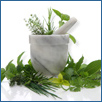
Elder, 2013 Herb of the Year
USDA Certified Organically Grown Medicinal Herbs, Certified by Global Culture

Elder
Elderberry could not be a more appropriate Herb of the Year, as we are bombarded with reports of the terrible flu epidemic sweeping the country. This beautiful hardy shrub is an excellent addition to the winter medicine chest and a beautiful specimen for the herbal landscape as well. The Elder has a long and colorful history in European herbal tradition and there are several species native to the Americas which have long been used by indigenous peoples as well.
Commonly known as Elder, Black Elderberry, Blue Elderberry, Holy Tree, Elder Mother, Pipe Tree or Bore Tree, the name Elder probably originates from the Anglo-Saxon word, Aeld; which means fire, as the hollow stems were often employed for fire starting.
A member of the Honeysuckle family all sub species of the Elderberry found in North and South America and Europe are of medicinal value as long as they have the traditional bluish/black berries. The Red Elder is quite a different shrub and is considered toxic and should not be confused with the blue or black Elder.
Sambucus nigra and Sambucus canadensis have both been selected for increased berry production resulting in numerous named varieties available in the nursery trade. The Sambucus caerula and Sambucus mexicana are found growing throughout the western regions of North, Central and South America.
In the Americas, the Elder has long been revered for its flowers, berries, unusual hollow stems and trunks for crafting, as a dye plant in some traditional basketry, and even the roots and bark have been of use medicinally in some traditions. The berries make an excellent jam or syrup, but if eaten raw or under ripe they are slightly toxic and can cause vomiting and stomach pain. The lovely white blooms and fresh leaves are also harvested for tea, tincturing or external use.
The Elderberry has long been respected as a sacred plant. In Europe it was considered very dangerous to cut down or remove an Elder from a field and that doing so could result in a lifetime of bad luck and serious misfortune. These revered trees were considered a portal of sorts to another world and the tree's presence kept evil spirits contained in the underworld and helped protect those around it from evil influence as well. In order to cut down an Elder, first one must ask the Elder goddess for permission to do so and have a strong need for its purpose. It was used medicinally, ceremonially, for building something or worn as a talisman for protection. In a Danish tradition the Elder was said to be a haven for the faerie world and lingering in an Elder grove at mid-summer might allow you to catch a glimpse of a faerie or two on their way to festivities!!
As Christianity pervaded European traditions, the Elder was often planted at gravesides and even pruned into the shape of the cross. Tree worship was frowned upon by the Christian church but the Elder continued to be revered and respected as a powerful protector despite the pressures of Christianity. Believed to bring blessings to any plot of land and as an important medicinal tree to the people, it was widely planted in hedgerows throughout Europe.
Native American tribes also made good use of the Elder. They used all parts of the plant including the roots and bark for it's extremely purgative action. Medicinally, the flowers were harvested, as well as the berries for food. The hollow stems of Elder were used for building fire and flutes and other instruments and hunting tools were fashioned from the wood.
Elder has been used medicinally throughout history. The flowers and leaves promote sweating and are an excellent remedy for flu-induced fevers especially when combined with Yarrow. My favorite tea for a feverish condition is Yarrow, Elder Flower and a little Mint, for cooling. Catnip is also a nice addition and a little Boneset for body aches. Elder is helpful in treating many respiratory complaints from asthma to the common cold as well as being somewhat diuretic. The berries can be made into juice, wine, jam, syrup or just dried. They are very high in Vitamin C and are an excellent anti-viral and immune boosting medicinal food.
When winter descends and everyone is catching sicknesses, a daily dose of Elderberry syrup can be extremely helpful in avoiding the various plagues. The leaves and flowers can be used externally as well, both as a poultice or as a salve which is anti-inflammatory and soothing. The root was used historically to promote purging but today is not commonly used for this effect. Caution: Can be extreme!!
The Elderberry grows from 6 to 15 feet tall depending on soil type, sun exposure, and water access. If grown far from other plants it takes on quite a spherical shape and can be almost as wide as it is tall. It is most commonly grown in hedgerows and is a wonderful addition to the herbscape as it attracts numerous songbirds over the course of its berry ripening season. The lovely white blooms open in mid spring and are also attractive to numerous beneficial insects and pollinators.
Elder trees are quite drought tolerant once established but they enjoy irrigation and will grow very vigorously if well watered!!
We are offering the traditional Sambucus caerula with the lovely compound green leaves, white blooms and blue/black berries and the variegated Sambucus nigra which has unusual white and green leaf patterning which creates an interesting contrast and also produces white flowers and blackberries.
Elder is Hardy to Zone 5 ($8.50).
To order Elder click here.

